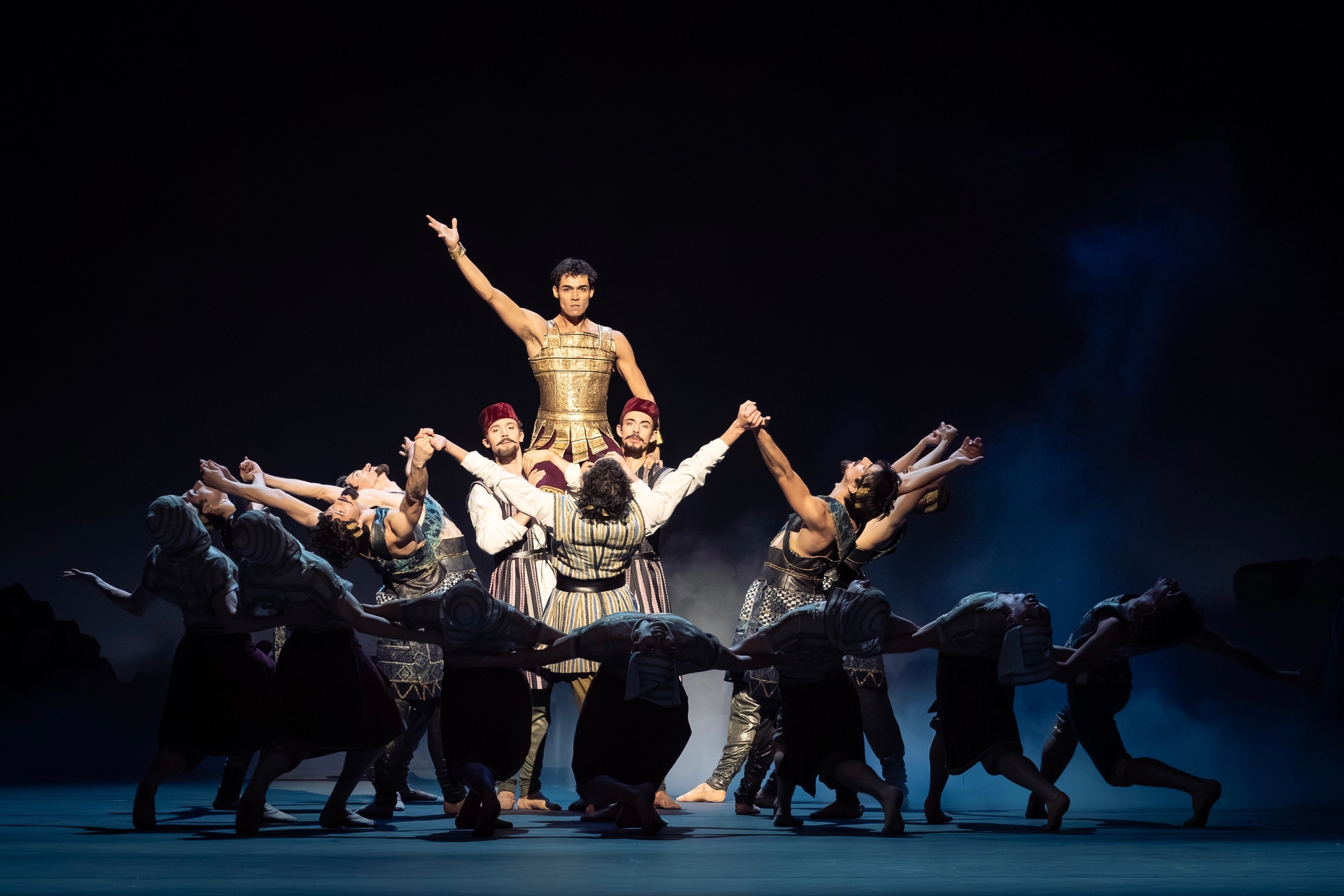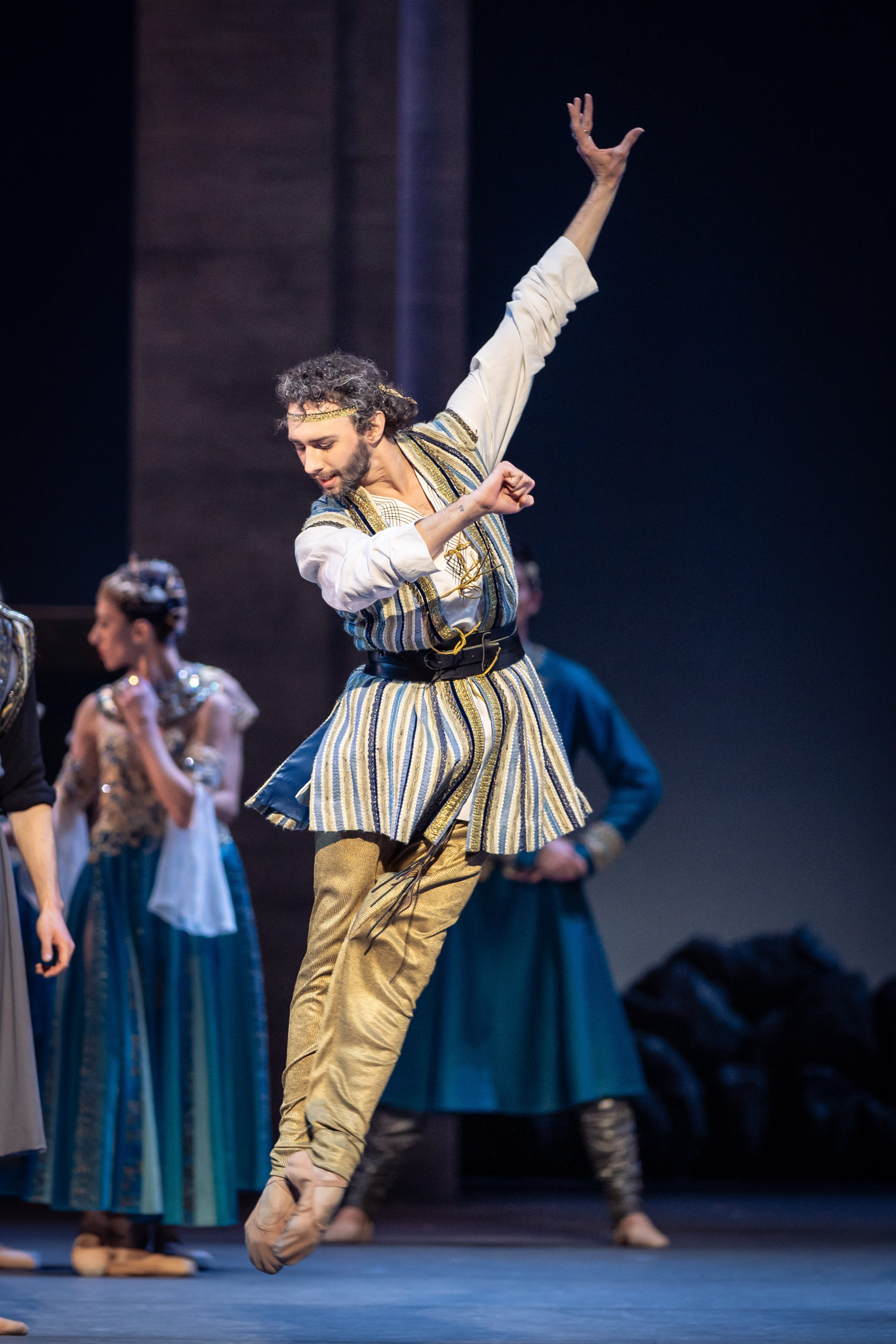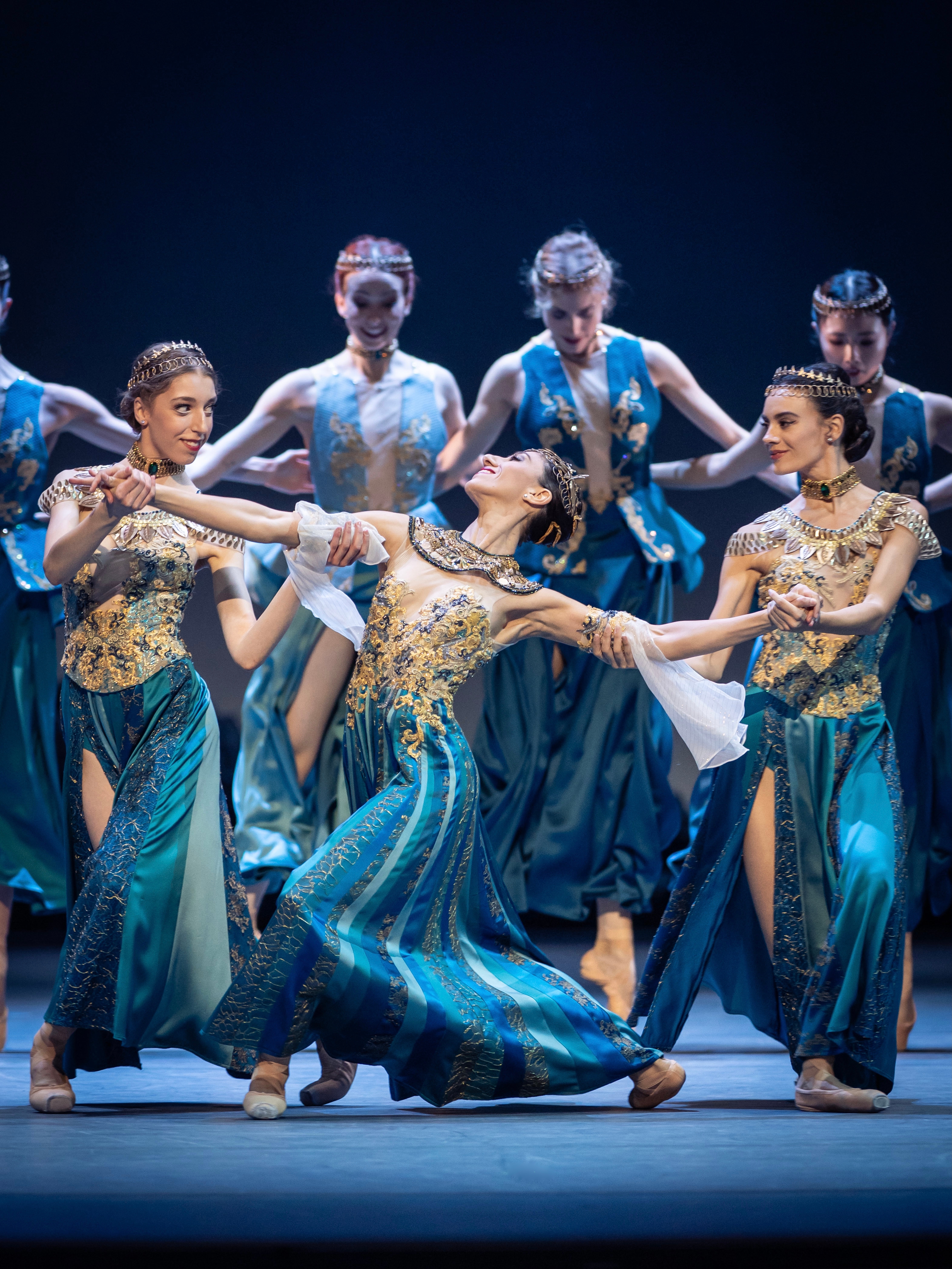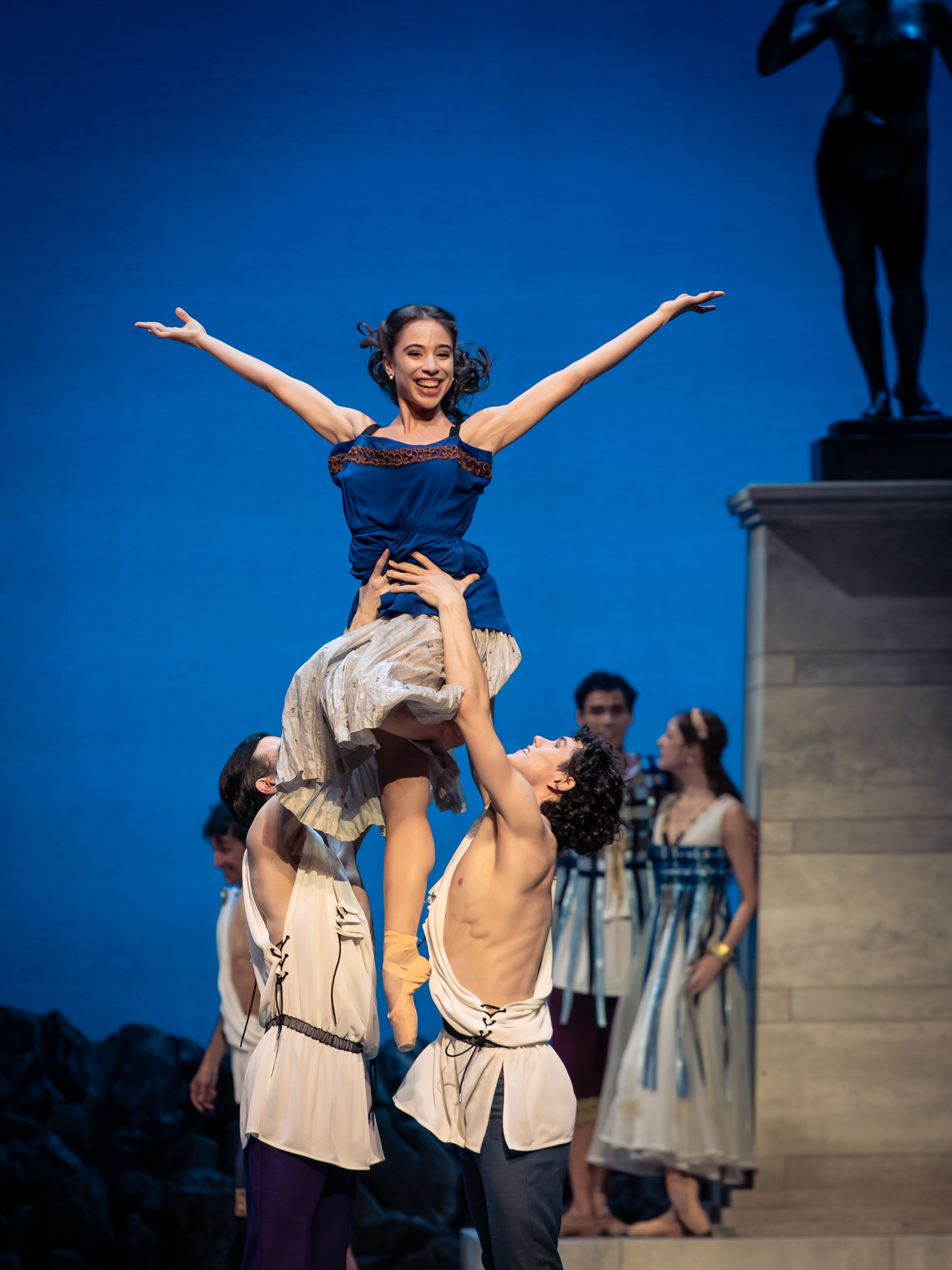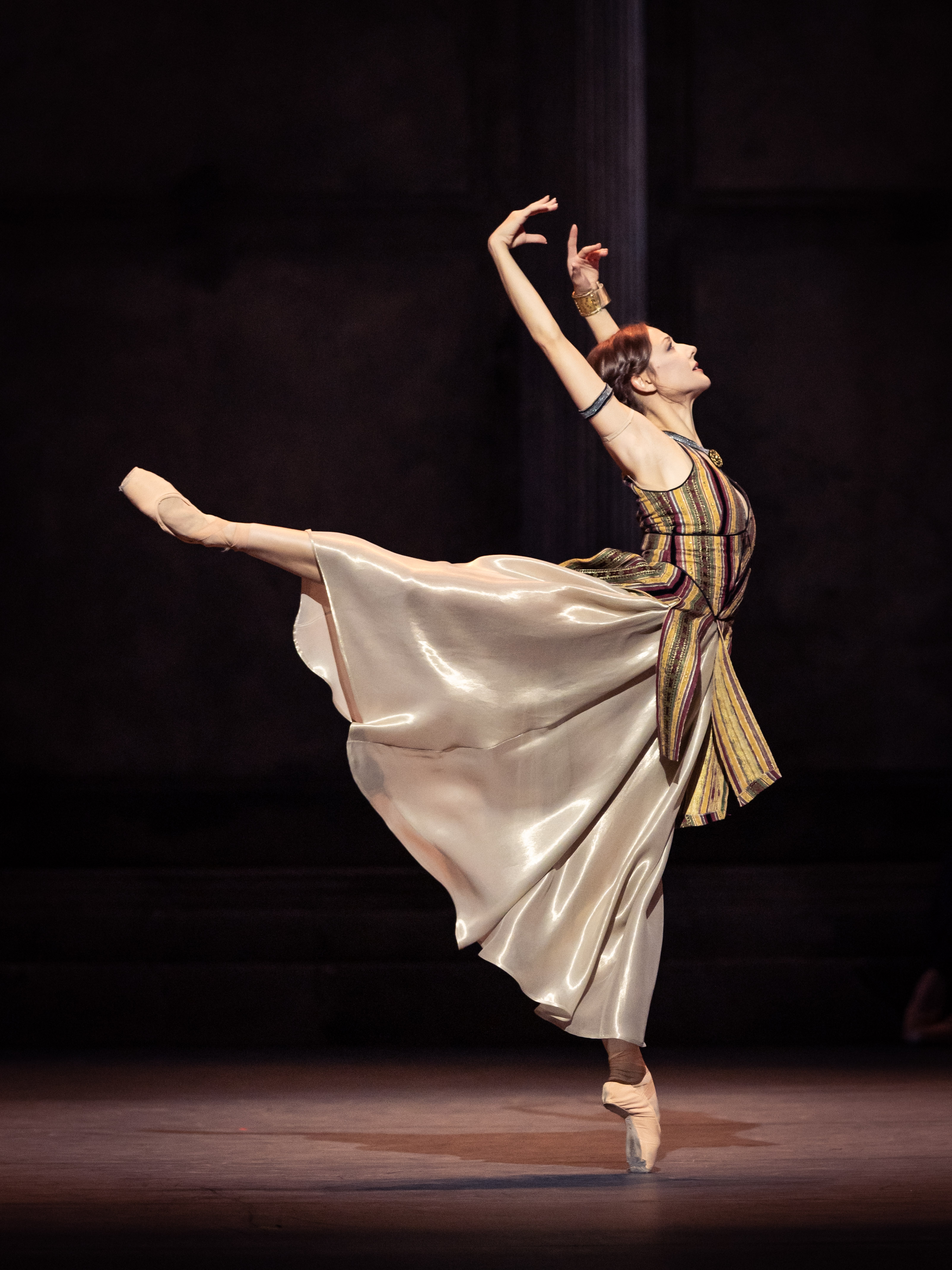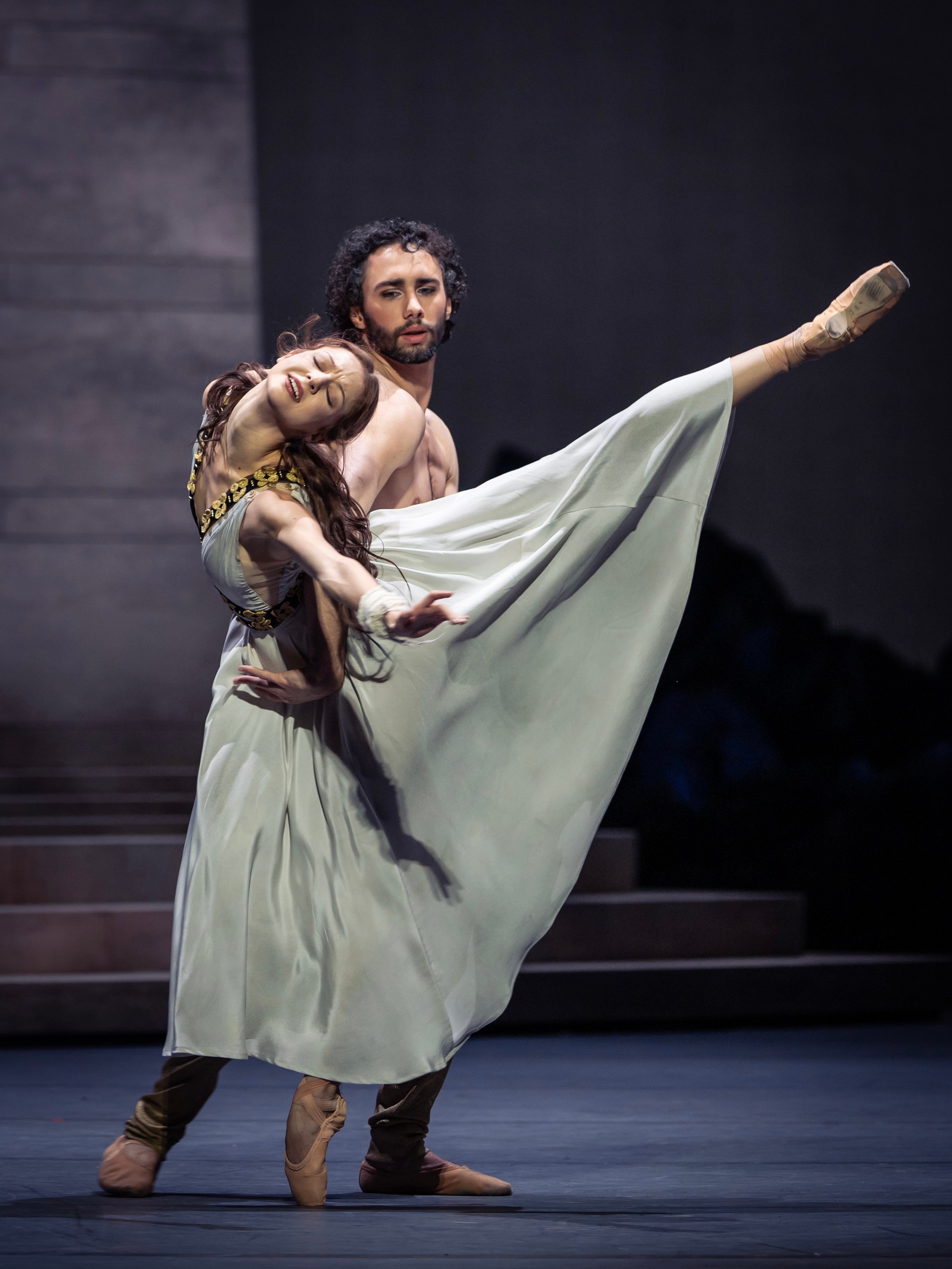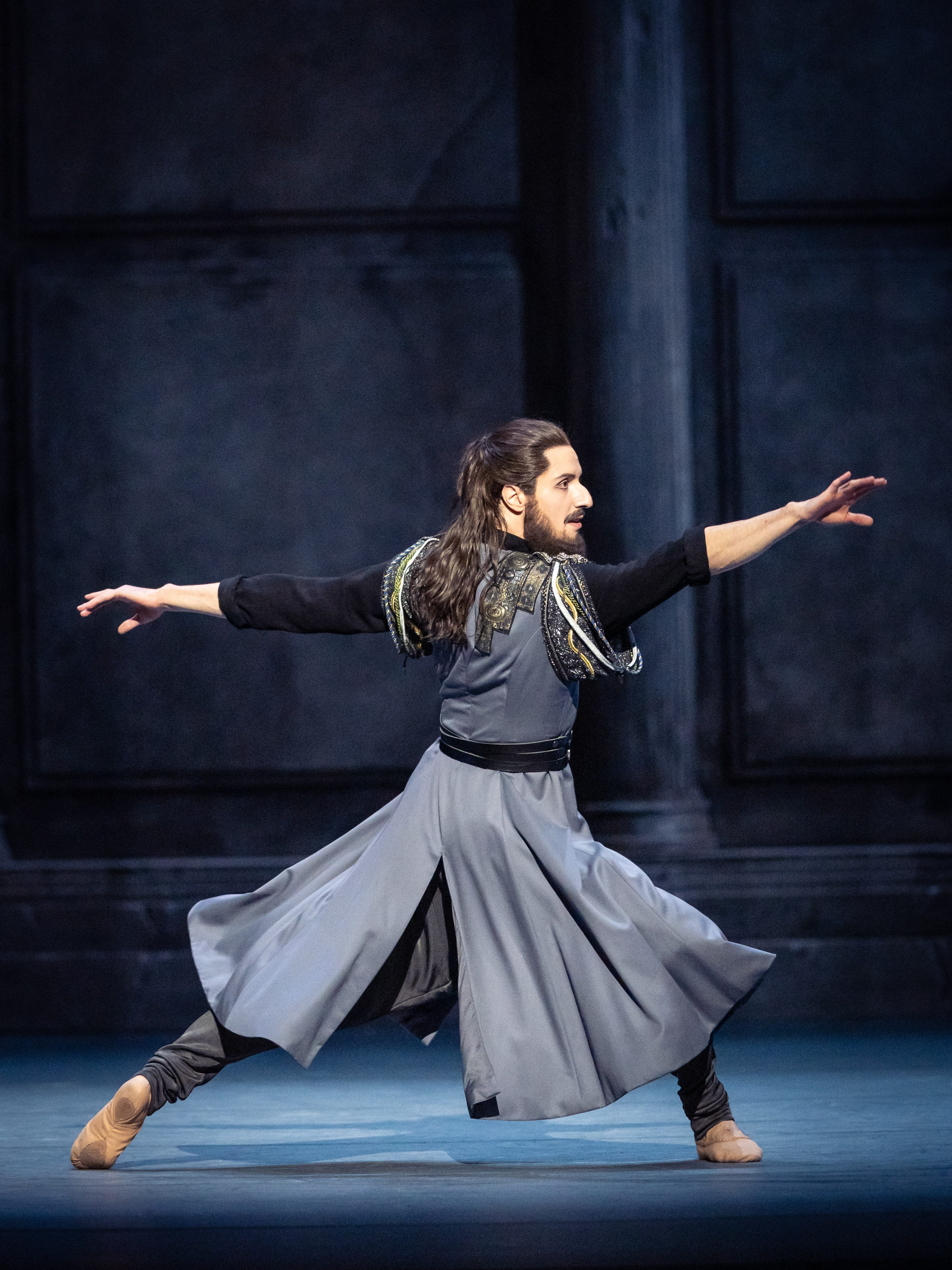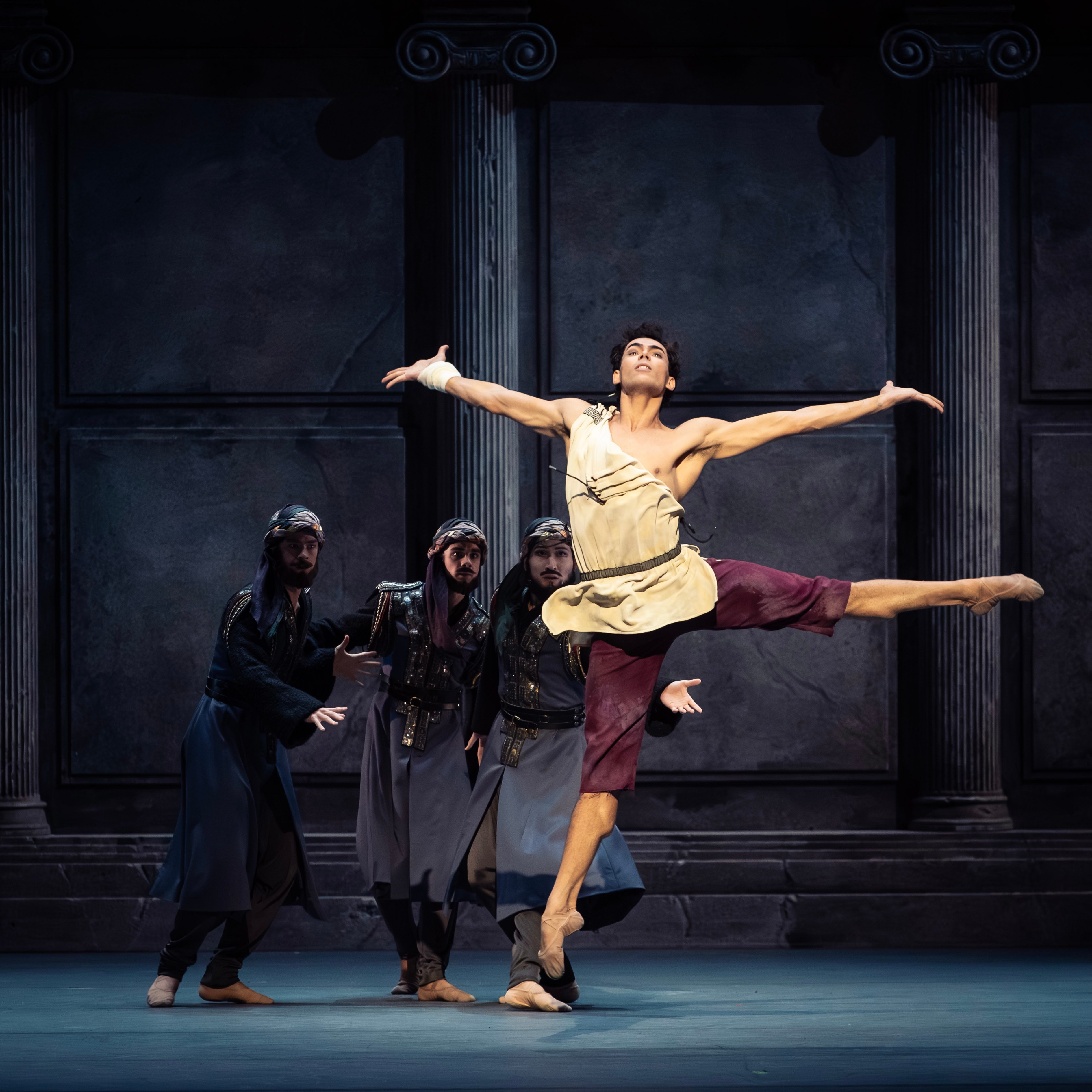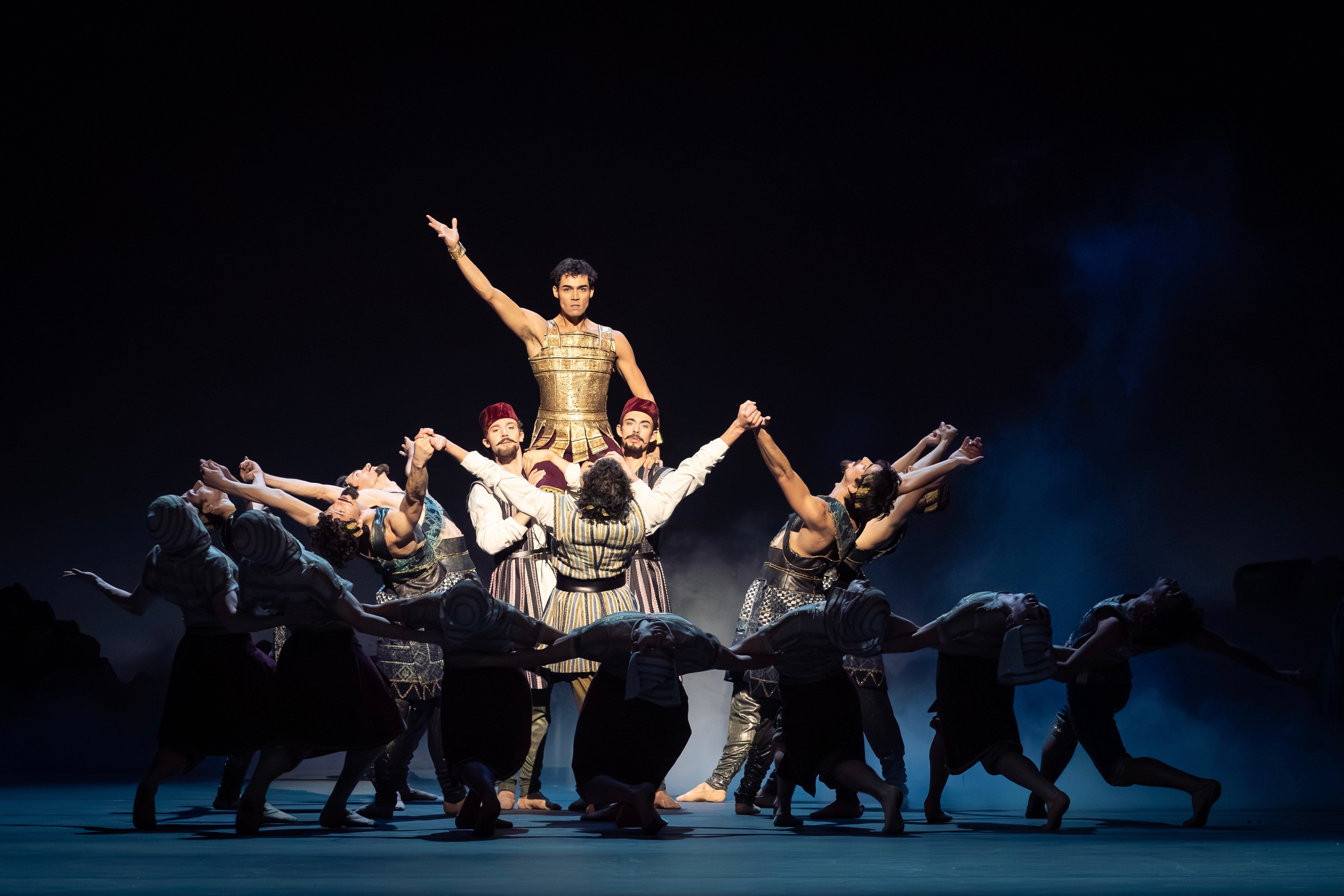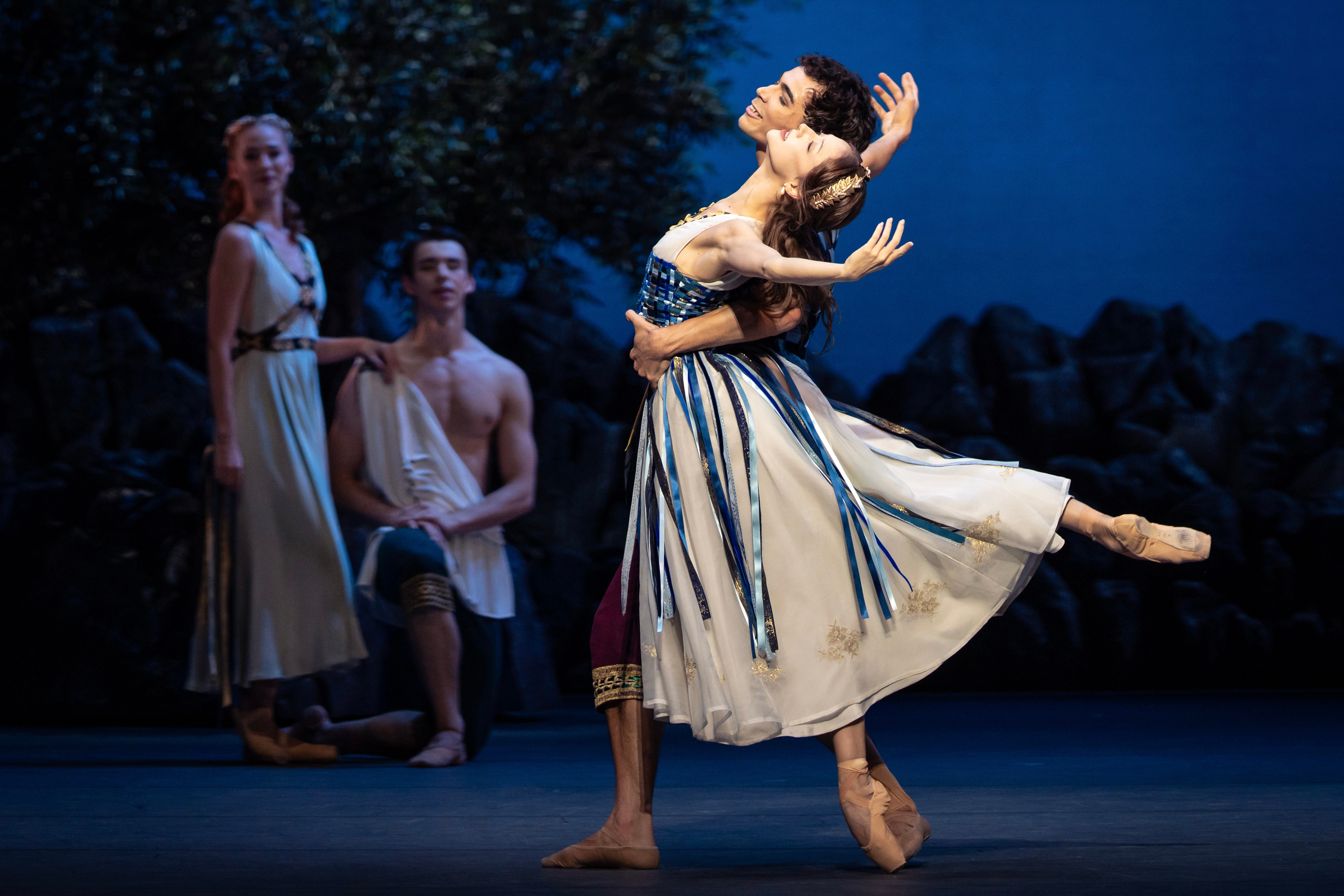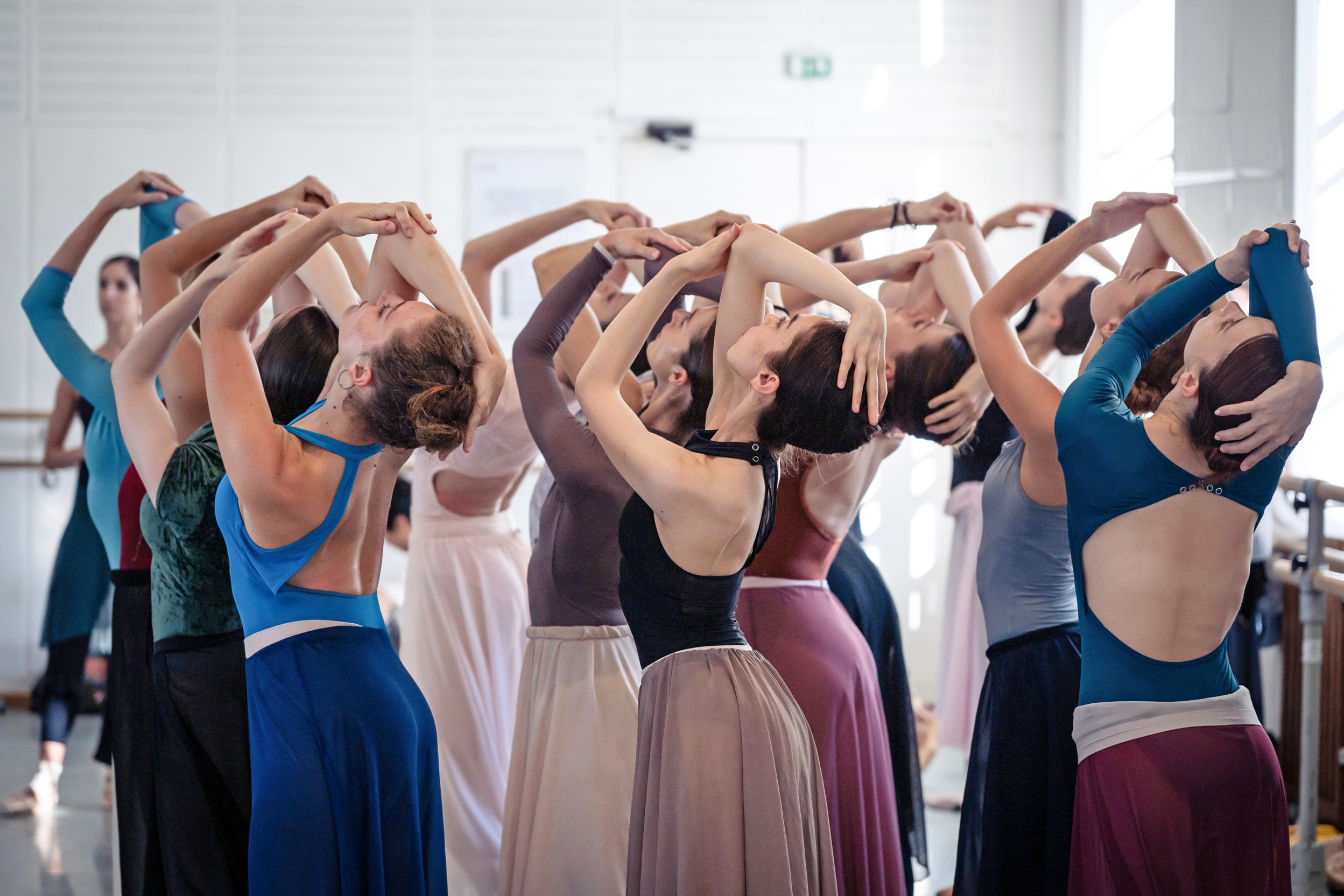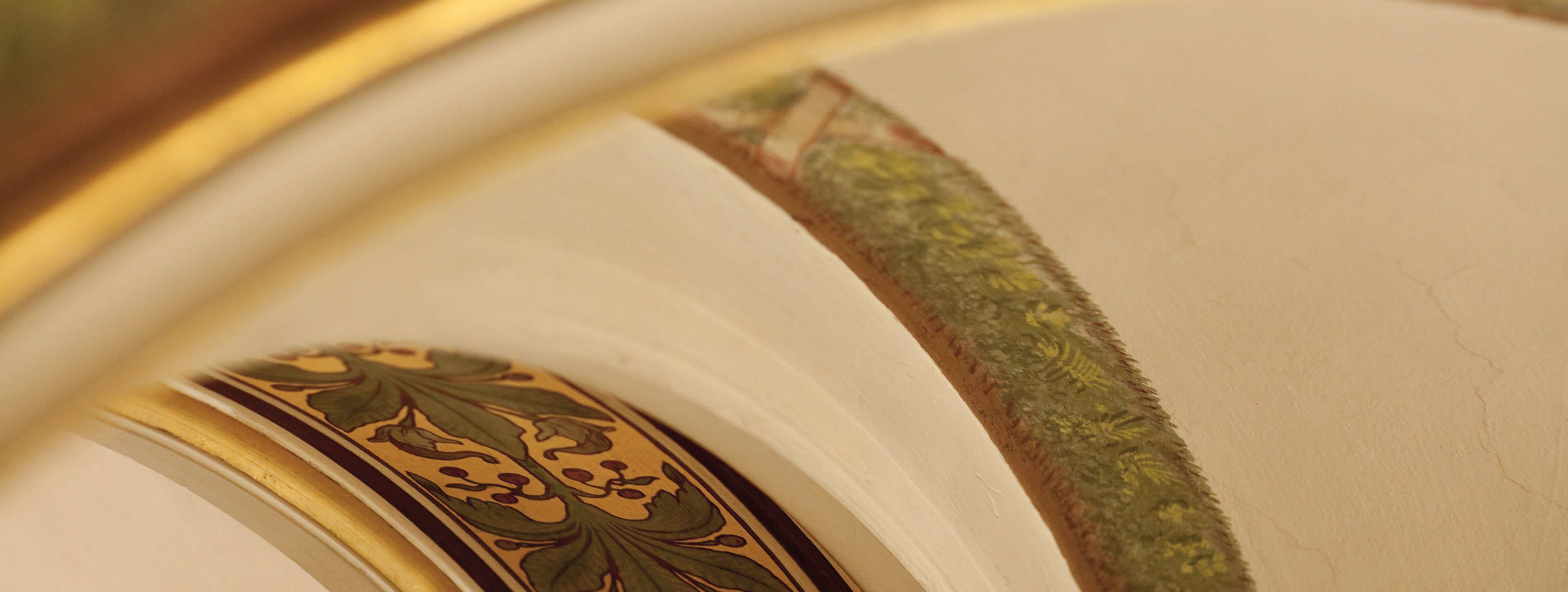About the Production
"Her beauty was not earthly but divine, yet not just like that of a nereid or mountain nymph, but like that of Aphrodite herself. Word of her overwhelming beauty spread everywhere, and suitors flocked to Syracuse."
With these words about his title heroine Kallirhoe, the author Chariton of Aphrodisias, who calls himself the "secretary of the lawyer Athenagoras", begins the prose story about the lovers Kallirhoe and Chaireas, whose happy wedding is followed by all kinds of conflicts, disasters, involuntary journeys and dangers before they are reunited in the end.
Kallirhoe, the earliest completely surviving ancient romance novel, probably written in the 1st century AD, is about the "jealousy of men and the whims of the gods" and describes great emotions such as love, envy, loss and forgiveness. Star choreographer Alexei Ratmansky, who has always been fascinated by ancient art and culture, premiered it in 2020 as a narrative ballet with the American Ballet Theatre and created a work that presents a choreographic, contemporary portrait of an ancient world. The European premiere of Kallirhoe with the Vienna State Ballet promises epic drama and great dancing to the magnificent and poetic music of Aram Khachaturian.
“It's about a great love and adventures. A first love, which then returns as mature emotion, cemented by the experience of horrible misfortunes.”
Kallirhoe
Storyline
In 400 BC in the Greek city of Syracuse, a choir of women celebrates Aphrodite, the goddess of love. They are accompanied by Kallirhoe, who is so beautiful that she is compared to the goddess. A group of young athletes, led by Chaireas and his friend Polycharmos, arrive. Kallirhoe and Chaireas catch sight of each other and immediately fall in love.
Kallirhoe's envious suitors fetch her father Hermocrates and Chaireas' father Ariston, who are bitter enemies, in the hope that they will break up the young lovers. But the fathers put their quarrel aside and agree to allow their children to marry. Kallirhoe and Chaireas exchange bracelets to show their devotion, and the wedding celebrations begin.
Undeterred, the suitors devise a new plan. One of them secretly gives Kallirhoe's maid a bracelet identical to the wedding bracelets. A seduction is faked to make Chaireas believe that Kallirhoe is unfaithful. In a fit of jealousy, he rushes to her to confront her. Although she protests her innocence, he does not listen to her. She collapses in pain and appears to be lifeless. Her guilty maid reveals the plan to Chaireas and he falls into despair, believing that he has killed Kallirhoe.
The grieving citizens bury Kallirhoe. After everyone has gone, she wakes up and is horrified to find herself buried alive. The pirate Theron and his followers come to plunder the grave. When they discover Kallirhoe, they kidnap her and also steal the valuable grave goods.
In his grief, Chaireas returns with Polycharmos to Kallirhoe's resting place and is shocked to find it completely empty. They realize that Kallirhoe must be alive and hurry off to find her.
On the other side of the sea in Miletus, the nobleman Dionysius laments the death of his wife. The pirates arrive and sell Kallirhoe to Dionysius. As soon as he sees her, he forgets his grief and falls in love with her.
Meanwhile, his servant Plangon suspects that Kallirhoe is pregnant. Kallirhoe explains that it is Chaireas' child. Plangon advises her to marry Dionysius in order to protect herself and her child, and Kallirhoe reluctantly agrees to her proposal.
As the wedding begins, Chaireas arrives. Plangon sees his bracelet and deduces that he is Kallirhoe's husband. Loyal to Dionysius and anxious to preserve his new-found happiness, she has Chaireas and Polycharmos arrested.
Now prisoners, Chaireas and Polycharmos are taken to the palace of the mighty Mithridates. Mithridates sees Chaireas' fine bracelet and asks him who he is. As Chaireas tells his story, it unfolds before him in a vision.
Mithridates now wants Kallirhoe for himself and orders his guards to find her. When Kallirhoe arrives, Dionysius and Mithridates fight for her. But the two are stopped and reminded that, according to the law, all disputes between nobles must be decided by the king of Babylon.
In Babylon, Dionysius and Mithridates present their cases to the king. Dionysius explains that Mithridates has tried to seduce his wife, but Mithridates argues that Kallirhoe is not Dionysius' wife as she is already married to Chaireas. Kallirhoe and Chaireas are summoned and their bracelets prove that they are married. Although they want to reunite, they are stopped by the king, who is now also enchanted by Kallirhoe. He refuses to listen to everyone's protests and forces them to dance with him.
Suddenly, chaos breaks out in the palace when Egypt declares war on Babylon. The king brings his court to safety, takes Kallirhoe with him and appoints Dionysius as general of his army.
A vengeful Chaireas joins the Egyptian army. His general is wounded in battle, and Chaireas' determination to fight for his love grows all the more. He leads the Egyptian troops to victory.
After their challenging adventure, Kallirhoe and Chaireas are reunited. A remorseful Chaireas asks for her forgiveness, and Kallirhoe is torn. Although she is grateful for Dionysius' kindness, she realizes that she only loves Chaireas. She decides to forgive him. Dionysius accepts her choice and, as a gesture of his love, asks Plangon to bring Kallirhoes and Chaireas' son.
The mistakes of the past are met with compassion. Kallirhoe, Chaireas and their son set off on their journey home.
“This ballet isn't archaeology. It’s for the stage, and everything is shaped by the Khachaturian music, which has an ancient feel,” says choreographer Alexei Ratmansky about his story ballet Callirhoe, which he has choreographed to various musics by the Russian composer. These were arranged by the British composer and pianist Philip Feeney. He used Khachaturian's ballet music Gayaneh as a basis, which he expanded with interpolations from other works.
